Table of Contents
The UNESCO Sites in Greece have resulted from the recognition of 18 cultural and natural landmarks as UNESCO World Heritage Sites in Greece and 14 locations on the Greece UNESCO tentative list. These touristic sites in Greece are acknowledged for their unique and valuable cultural, natural, artistic, and historical significance and are preserved for future generations to enjoy.
In addition to these 18 sites in the Greece UNESCO list, there are many other places to travel to Greece that are being considered for UNESCO recognition. These sites, listed on the tentative list, showcase the rich cultural heritage of the country and are waiting for approval to join the prestigious and famous World Heritage Sites list.
To help visitors discover these remarkable Greece tourist attractions, we have put together an interactive map of the UNESCO sites in Greece.
Greece UNESCO Map
Click markers to show information and photo.
World Heritage Sites in Greece
UNESCO World Heritage Sites in Greece
There are 18 UNESCO World Heritage Sites in Greece. All of these three sites are listed under the Cultural category.
- Acropolis, Athens
- Archaeological Site of Aigai (modern name Vergina)
- Archaeological Site of Delphi
- Archaeological Site of Mystras
- Archaeological Site of Olympia
- Archaeological Site of Philippi
- Archaeological Sites of Mycenae and Tiryns
- Delos
- Medieval City of Rhodes
- Monasteries of Daphni, Hosios Loukas and Nea Moni of Chios
- Old Town of Corfu
- Paleochristian and Byzantine Monuments of Thessalonika
- Pythagoreion and Heraion of Samos
- Sanctuary of Asklepios at Epidaurus
- Temple of Apollo Epicurius at Bassae
- The Historic Centre (Chorá) with the Monastery of Saint-John the Theologian and the Cave of the Apocalypse on the Island of Pátmos
- Meteora
- Mount Athos
UNESCO World Heritage Sites in Greece are protected locations for their cultural and natural importance.
Acropolis, Athens
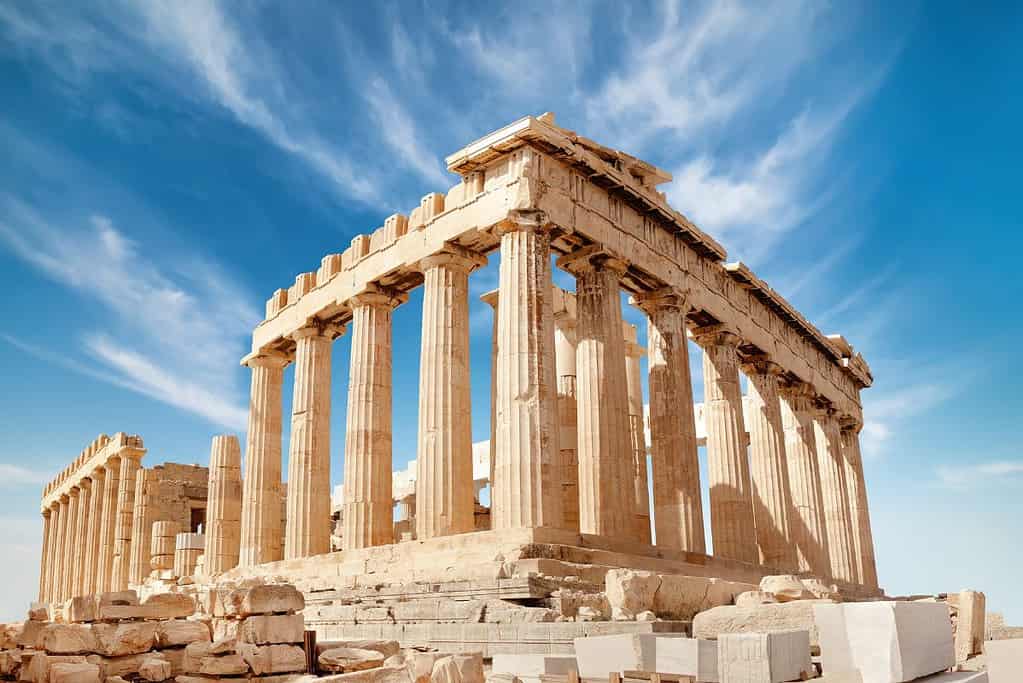
The Acropolis in Athens, Greece, is a UNESCO World Heritage Site of immense historical and cultural significance. Perched on a rocky hilltop, it showcases the architectural brilliance of the ancient Greeks. The crown jewel of the Acropolis is the iconic Parthenon, a magnificent temple dedicated to the goddess Athena. Its grandeur is matched by the Erechtheion, with its famous porch of Caryatids and the Temple of Athena Nike. These ancient structures stand as enduring symbols of classical Greek civilization and continue to inspire awe with their intricate design and exquisite craftsmanship. Visiting the Acropolis allows you to step back and witness the legacy of one of the world’s greatest ancient civilizations.
Archaeological Site of Aigai (modern name Vergina)
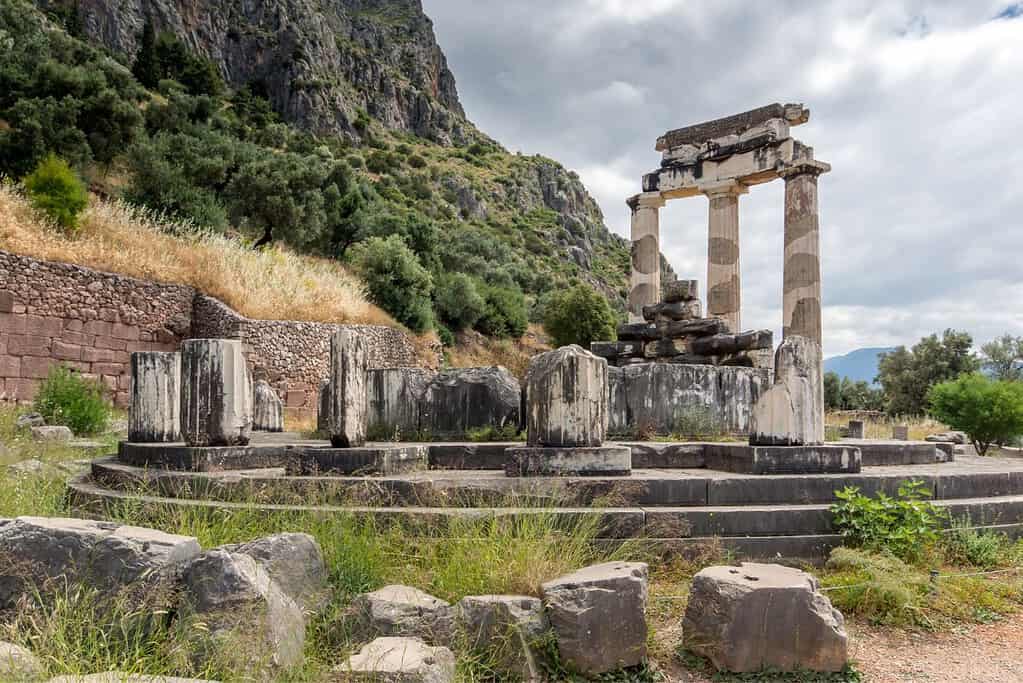
The Archaeological Site of Aigai, known by its modern name Vergina, is a UNESCO World Heritage Site located in northern Greece. It holds great historical significance as the burial site of the ancient Macedonian kings, including King Philip II, the father of Alexander the Great. The site features a remarkable collection of tombs and royal burial mounds, revealing the grandeur and opulence of the Macedonian dynasty. The most notable discovery at Aigai is the Tomb of Philip II, which contains intricate frescoes, exquisite golden artifacts, and the famous golden larnax that held Philip’s remains. This archaeological site provides a fascinating glimpse into ancient Macedonia’s rich history and cultural heritage.
Archaeological Site of Delphi
The Archaeological Site of Delphi is a renowned UNESCO World Heritage Site located in Greece. Nestled on the slopes of Mount Parnassus, it was considered the center of the world in ancient Greek mythology. Delphi was a significant religious and cultural hub, housing the Temple of Apollo, where the legendary Oracle of Delphi delivered prophecies. The site features impressive ruins, including the reconstructed Treasury of Athens and the ancient theater, where dramatic performances took place during festivals. Delphi’s rich history and stunning mountainous surroundings make it a captivating destination for history enthusiasts and travelers alike.
Archaeological Site of Mystras
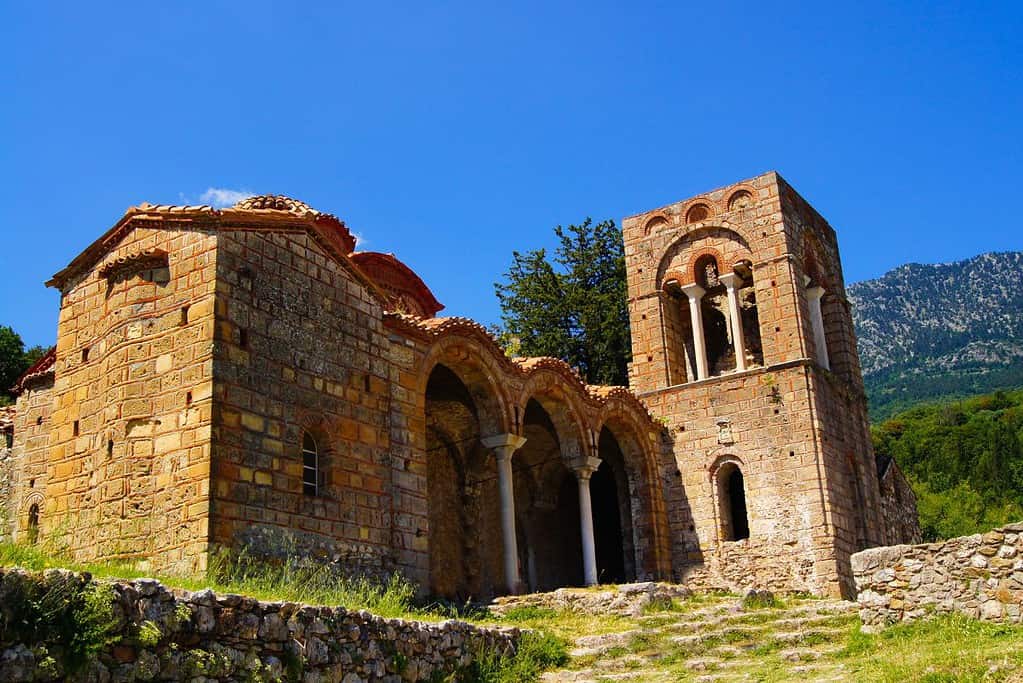
The Archaeological Site of Mystras is a UNESCO World Heritage Site in Greece. Nestled on a hillside near Sparta, it showcases the remains of a fortified medieval city that was once a significant Byzantine stronghold. The site features well-preserved churches, palaces, and monasteries, which exemplify the architectural and artistic achievements of the Byzantine Empire. Visitors can explore the winding streets, admire the vibrant frescoes, and marvel at the breathtaking panoramic views of the surrounding landscape. The Archaeological Site of Mystras offers a fascinating glimpse into Greece’s rich history and cultural heritage.
Archaeological Site of Olympia
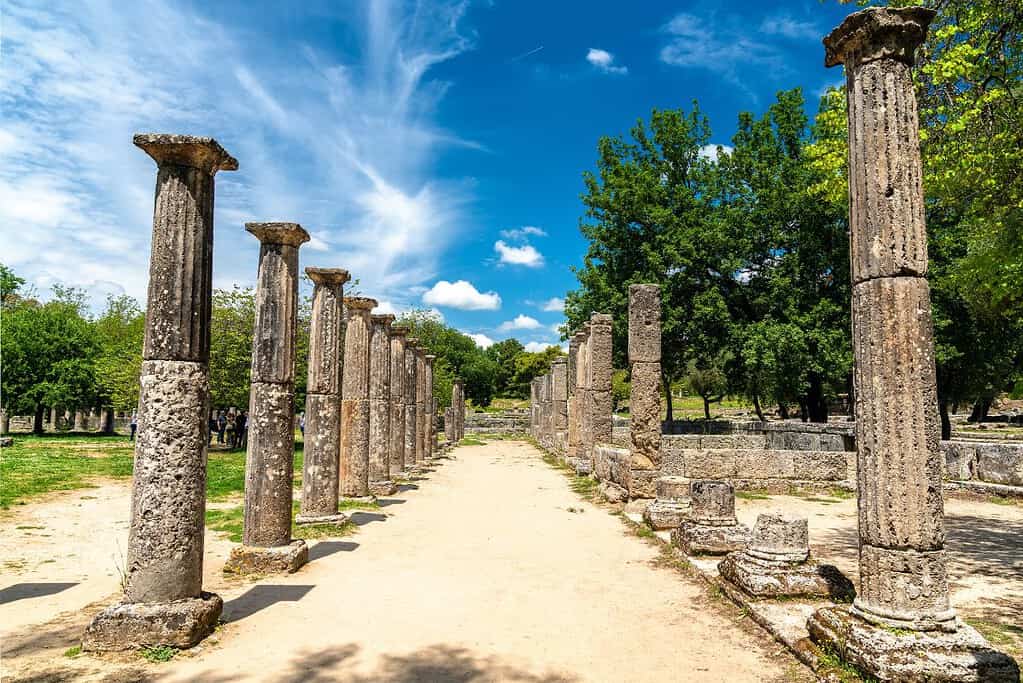
The Archaeological Site of Olympia is a UNESCO World Heritage Site in Greece. It holds significant historical and cultural value as it was the birthplace of the Olympic Games in ancient times. The site features ruins that date back to the 8th century BCE, including the remains of temples, stadiums, and the iconic Temple of Zeus. The archaeological site showcases the ancient Greek civilization’s architectural and artistic achievements, offering a glimpse into the history and origins of the Olympic Games, an event celebrated worldwide today.
Archaeological Site of Philippi
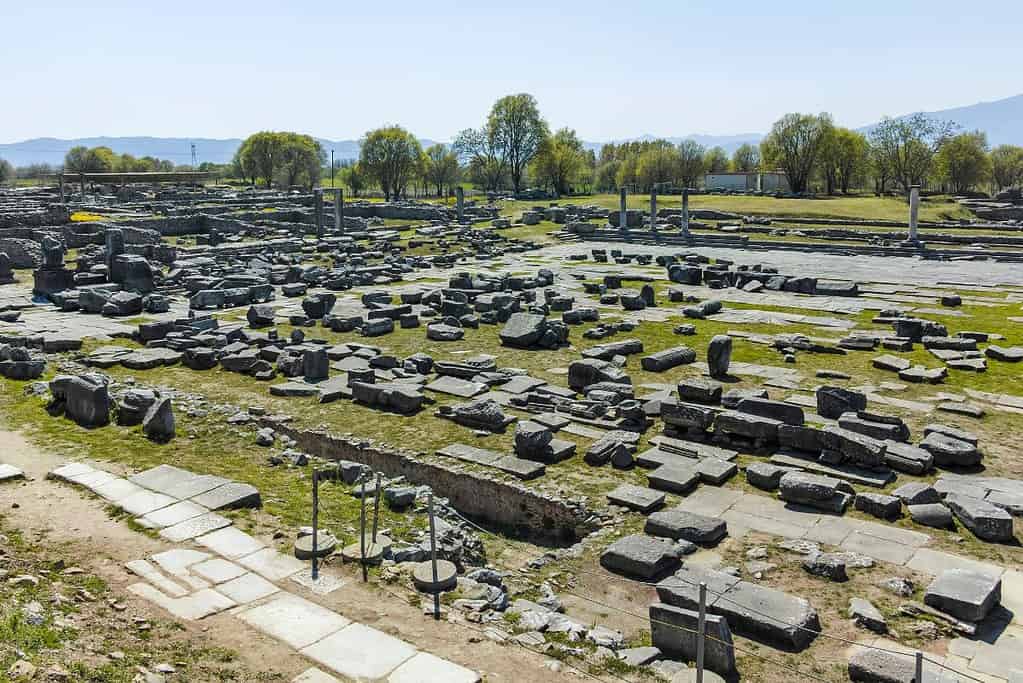
The Archaeological Site of Philippi is a UNESCO World Heritage Site in northeastern Greece. It holds significant historical and archaeological value as the site of an ancient city founded by Philip II of Macedon in the 4th century BCE. Philippi played a crucial role in the Hellenistic, Roman, and Byzantine periods, serving as a significant center for culture, trade, and religion. Today, visitors can explore the well-preserved ruins of the city, including its ancient theater, forum, basilicas, and walls, gaining insight into the rich history and architectural achievements of this critical site.
Archaeological Sites of Mycenae and Tiryns
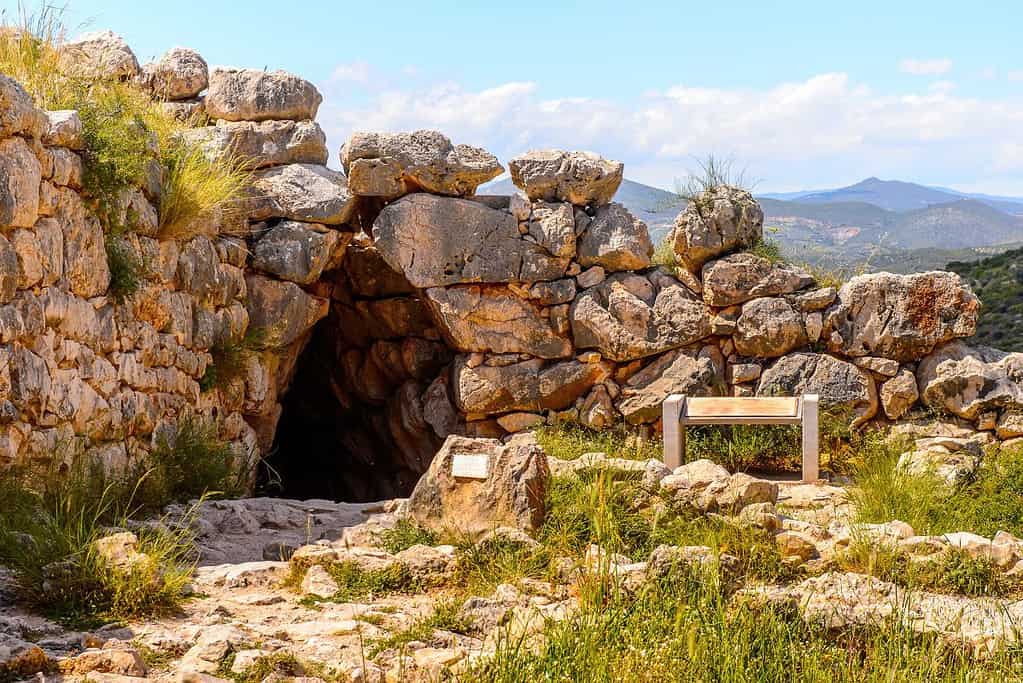
The Archaeological Sites of Mycenae and Tiryns are UNESCO World Heritage Sites located in Greece. These sites hold significant historical and cultural value, showcasing the remnants of the ancient Mycenaean civilization. Mycenae, known as the legendary city of Agamemnon, features impressive structures such as the Lion Gate and the Treasury of Atreus. Tiryns, a fortified settlement, exhibits well-preserved walls and buildings that reflect the advanced engineering skills of the Mycenaeans. These sites provide a captivating glimpse into the rich and influential civilization that thrived in the region during the Bronze Age.
Delos
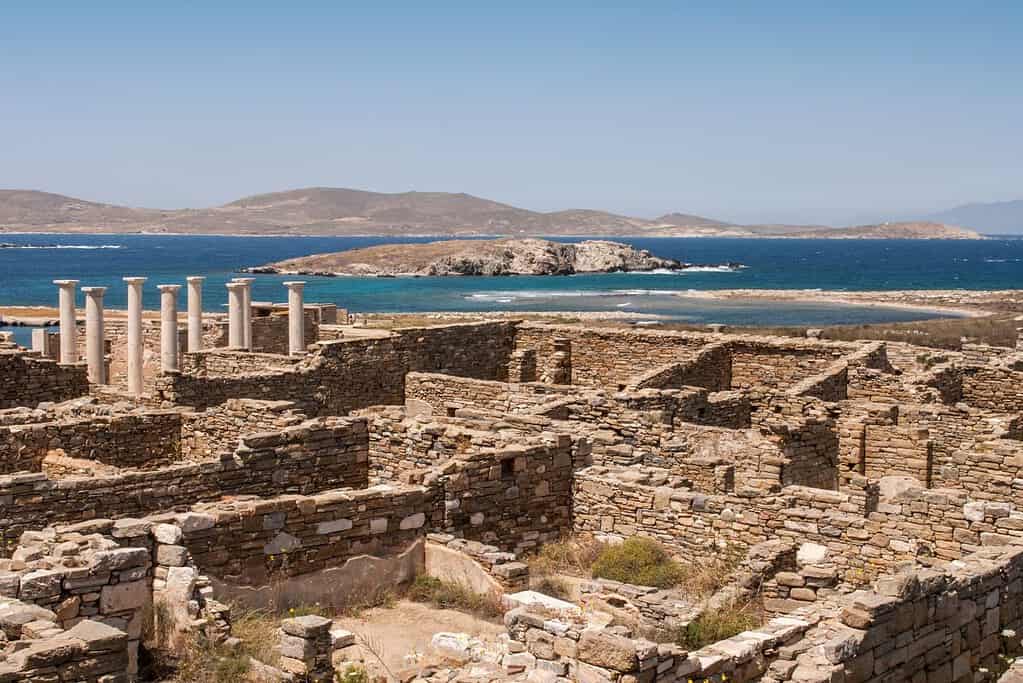
Delos, a UNESCO World Heritage Site, is an extraordinary archaeological island in the Cyclades archipelago of Greece. Steeped in ancient mythology and history, Delos was once a thriving religious, political, and commercial center in the Aegean Sea. Today, it is a remarkable open-air museum showcasing well-preserved ruins and structures from various periods, including the iconic Terrace of the Lions, the impressive House of Dionysus, and the grand Temple of Apollo. Exploring the sacred site of Delos offers a captivating journey back in time, allowing visitors to witness the remnants of a once-flourishing ancient civilization.
Medieval City of Rhodes
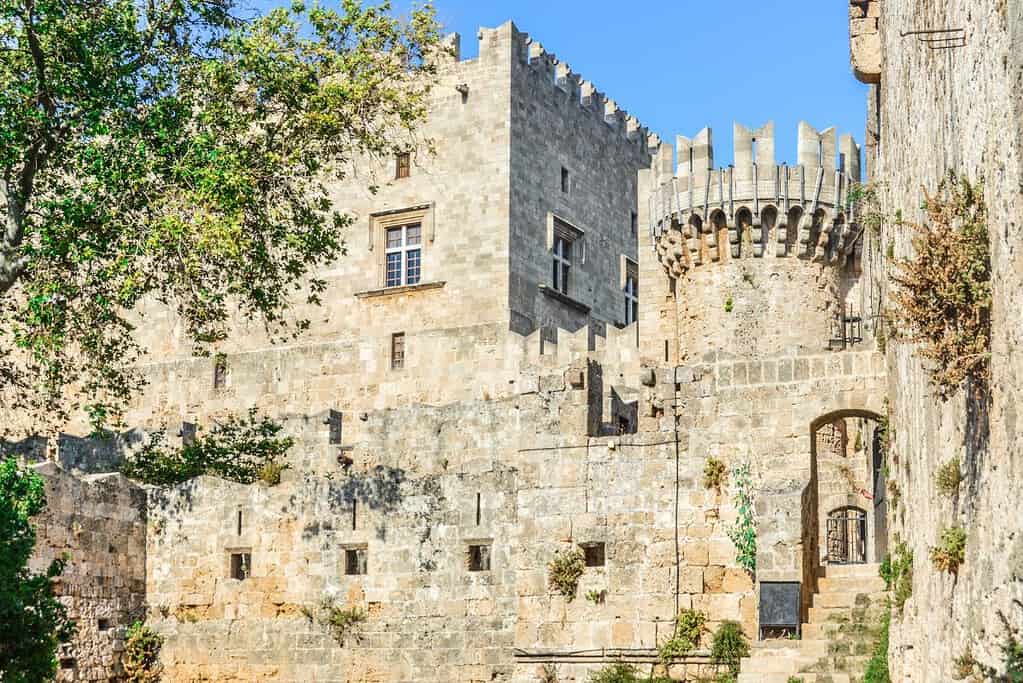
The Medieval City of Rhodes is a UNESCO World Heritage Site in Rhodes, Greece. It is a remarkable example of a well-preserved medieval city and stands as a testament to the history and cultural heritage of the region. The city’s fortifications, built by the Knights of Saint John, include imposing walls, gates, and towers encircle the old town. Within these walls, visitors can explore narrow, winding streets lined with historic buildings, charming squares, and significant landmarks such as the Palace of the Grand Master and the Street of the Knights. The Medieval City of Rhodes offers a captivating glimpse into the medieval era, inviting visitors to step back in time and experience its rich architectural and historical legacy.
Monasteries of Daphni, Hosios Loukas, and Nea Moni of Chios

The Monasteries of Daphni, Hosios Loukas, and Nea Moni of Chios are UNESCO World Heritage Sites in Greece. These monasteries are significant examples of Byzantine architecture and art, showcasing the region’s rich cultural heritage. The Monastery of Daphni, situated near Athens, features stunning mosaics depicting religious scenes from the 11th century. Hosios Loukas, located in central Greece, is renowned for its magnificent mosaics, frescoes, and architectural beauty. Nea Moni of Chios, situated on the island of Chios, impresses visitors with its intricate mosaics, marble decorations, and well-preserved monastery complex. These monasteries provide a glimpse into the artistic and spiritual achievements of the Byzantine Empire.
Old Town of Corfu
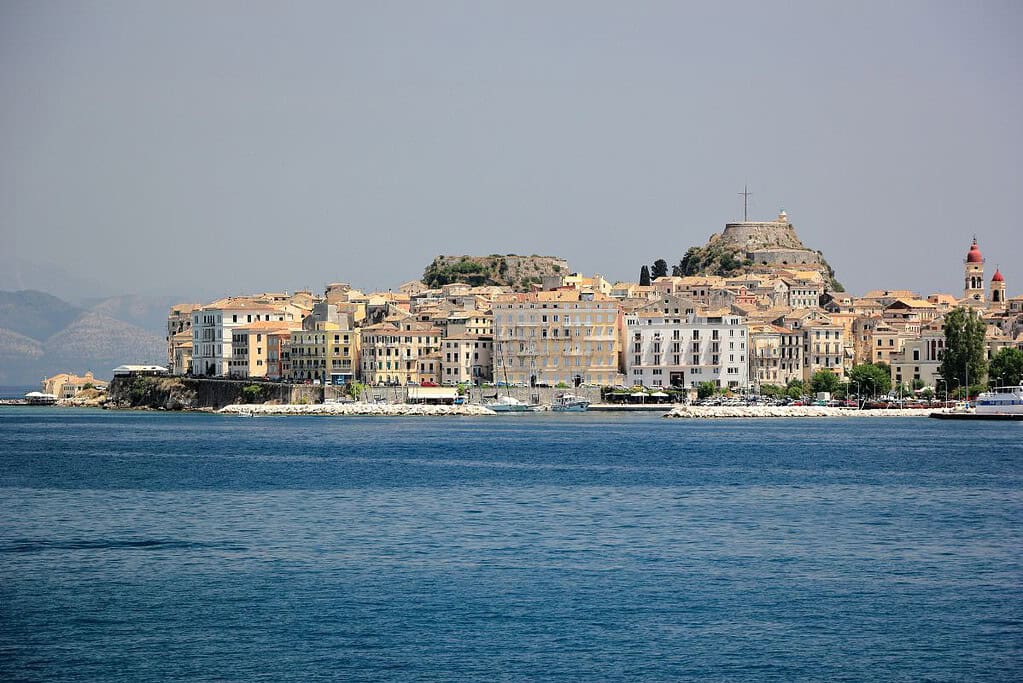
The Old Town of Corfu, located on the beautiful island of Corfu in Greece, is a UNESCO World Heritage Site. Steeped in history and charm, this well-preserved old town showcases a harmonious blend of Venetian, French, and British architectural influences. Its narrow cobbled streets, imposing fortresses, and elegant mansions create a captivating atmosphere. The Old Town is home to landmarks such as the Old Fortress, the Liston Promenade, and the Church of Saint Spyridon. With its vibrant colors, culture, and past, the Old Town of Corfu is a testament to the island’s rich history and a delight for visitors worldwide.
Paleochristian and Byzantine Monuments of Thessalonika
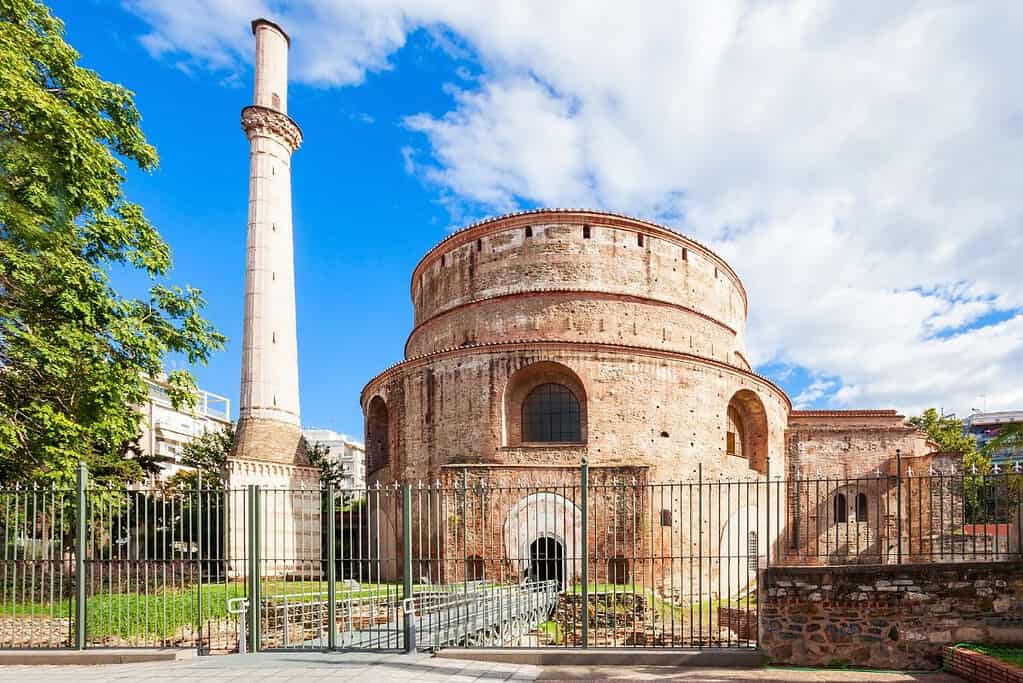
The Paleochristian and Byzantine Monuments of Thessalonika are UNESCO World Heritage Sites in Thessaloniki, Greece. These remarkable monuments showcase the city’s rich history and cultural significance during the Paleochristian and Byzantine periods. The site includes various churches, such as the Rotunda of Galerius, a massive cylindrical structure adorned with stunning mosaics, and the Church of Agios Demetrios, dedicated to the patron saint of Thessaloniki. Other notable sites include the Church of Hagia Sophia, known for its exquisite mosaics and architectural beauty, and the Church of Panagia Chalkeon, featuring intricate marble decorations. These monuments are a testament to the city’s religious and artistic heritage, attracting visitors worldwide.
Pythagoreion and Heraion of Samos
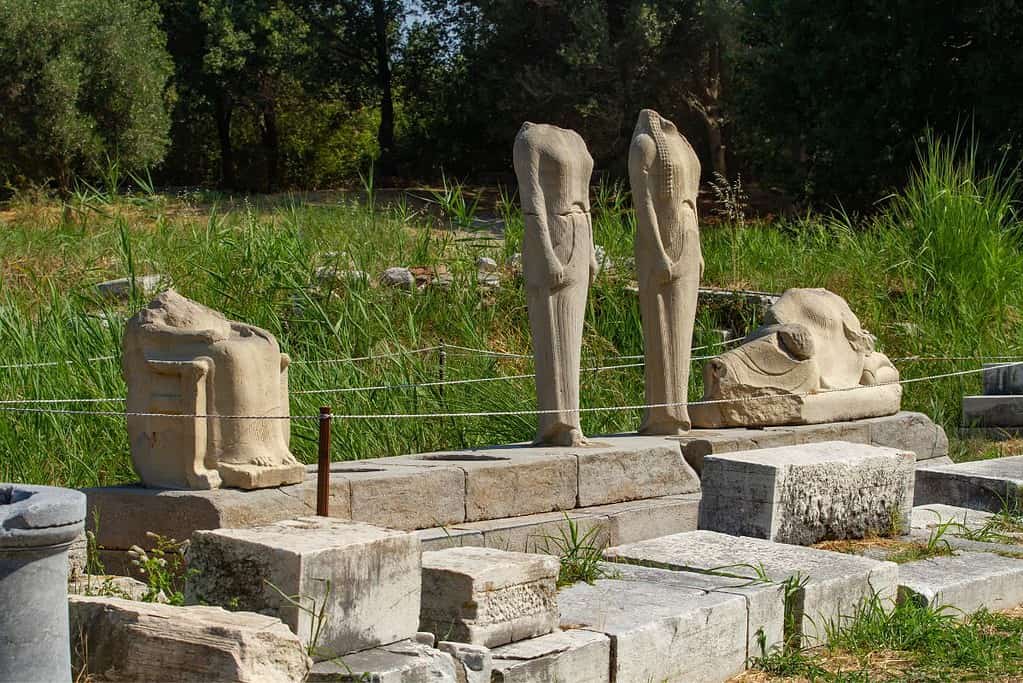
The Pythagoreion and Heraion of Samos are UNESCO World Heritage Sites located on the island of Samos in Greece. The Pythagoreion is an ancient fortified port town that played a significant role in maritime trade during the 6th century BC. It is named after the famous mathematician Pythagoras, born on the island. The site showcases impressive architectural remains, including the Eupalinian Aqueduct, a remarkable feat of ancient engineering. The Heraion of Samos, dedicated to the goddess Hera, is a sanctuary complex known for its grand temple and breathtaking marble statues. These sites offer valuable insights into the rich history and cultural heritage of ancient Samos.
Sanctuary of Asklepios at Epidaurus
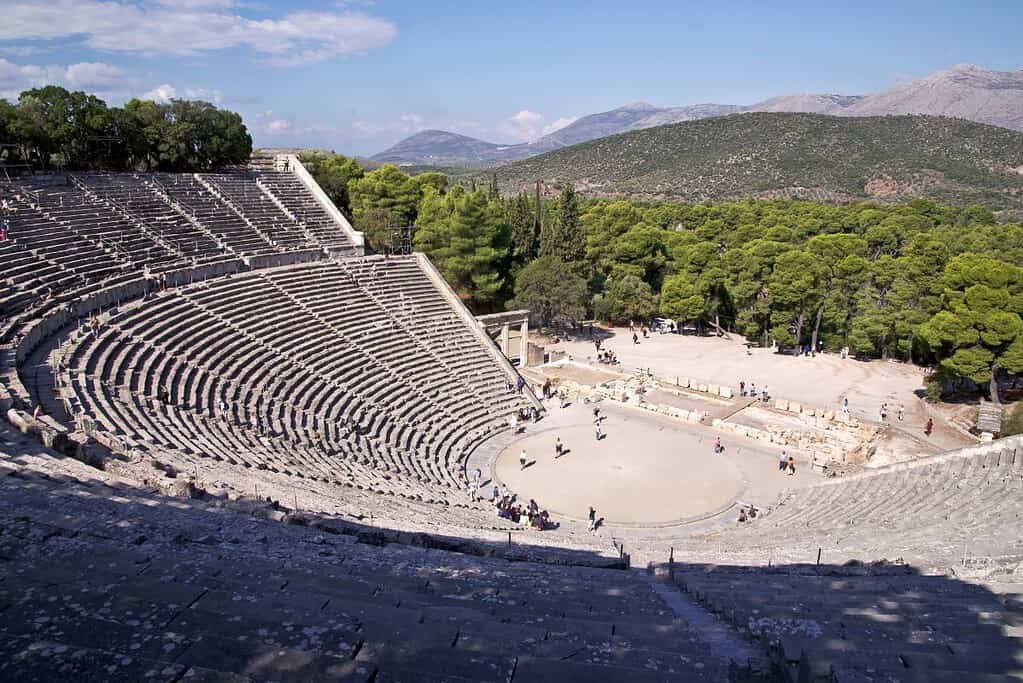
The Sanctuary of Asklepios at Epidaurus is a remarkable UNESCO World Heritage Site in Greece. This sacred sanctuary dates back to the 4th century BCE and is dedicated to the Greek god of healing, Asklepios. It is renowned for its exceptional architecture and well-preserved ancient theater, considered a masterpiece of classical Greek design. The sanctuary also features other structures, including a tholos (circular building), a stadium, and several temples. Visitors can explore the site’s tranquil surroundings and immerse themselves in this ancient healing center’s rich history and cultural significance.
Temple of Apollo Epicurius at Bassae
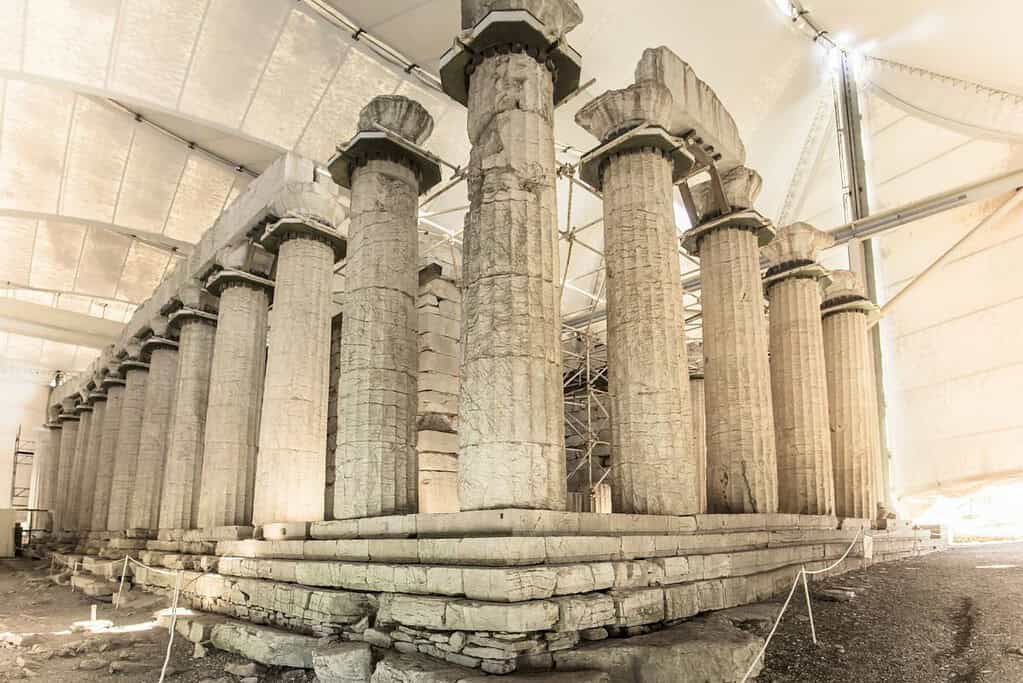
The Temple of Apollo Epicurius at Bassae is a UNESCO World Heritage Site in Greece. Situated in the Arcadia region, this ancient temple is dedicated to the god Apollo Epicurius, who was worshipped as a healer. The temple is renowned for its architectural excellence and unique features, including combining Doric and Ionic orders. Built during the 5th century BCE, it showcases remarkable craftsmanship and engineering. The temple’s remote location in the rugged mountains adds to its mystique and historical significance. The Temple of Apollo Epicurius at Bassae stands as a testament to ancient Greece’s rich cultural heritage and ingenuity.
The Historic Centre (Chorá) with the Monastery of Saint-John the Theologian and the Cave of the Apocalypse on the Island of Pátmos
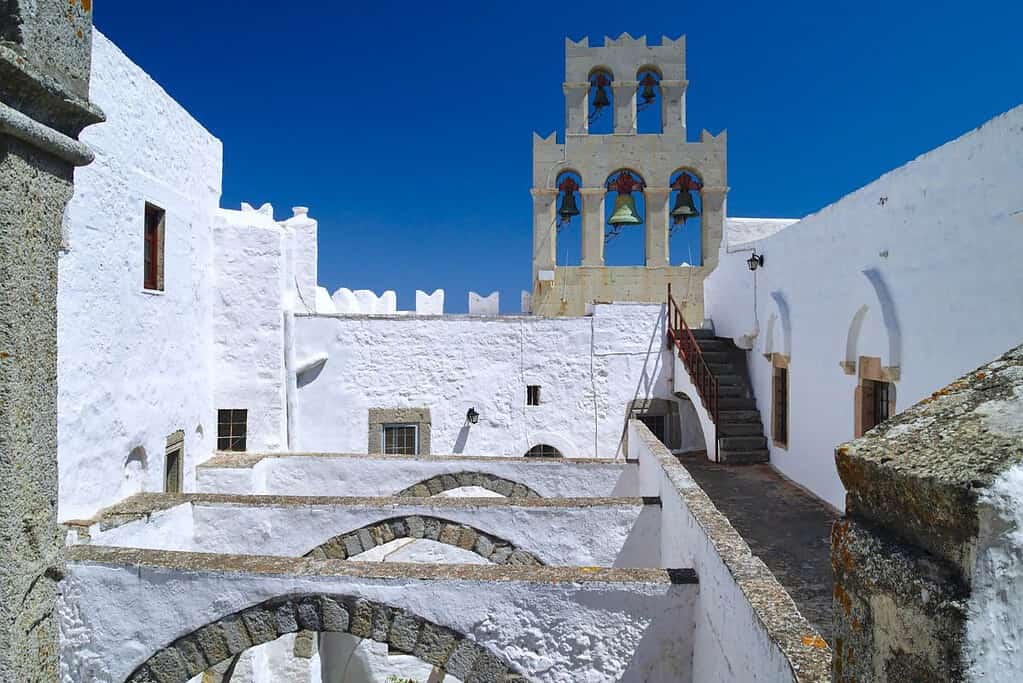
The Historic Centre (Chorá) with the Monastery of Saint-John the Theologian and the Cave of the Apocalypse on the Island of Pátmos is a UNESCO World Heritage Site in Greece. This site holds great cultural and religious significance. The Chorá, or the old town of Pátmos, showcases a remarkable blend of traditional Greek architecture and medieval influences. It is home to the Monastery of Saint-John the Theologian, a magnificent structure that dates back to the 11th century and houses invaluable religious artifacts. The nearby Cave of the Apocalypse is believed to be where the biblical Book of Revelation was written. This site attracts visitors worldwide, seeking to explore its rich history and experience its spiritual aura.
Meteora
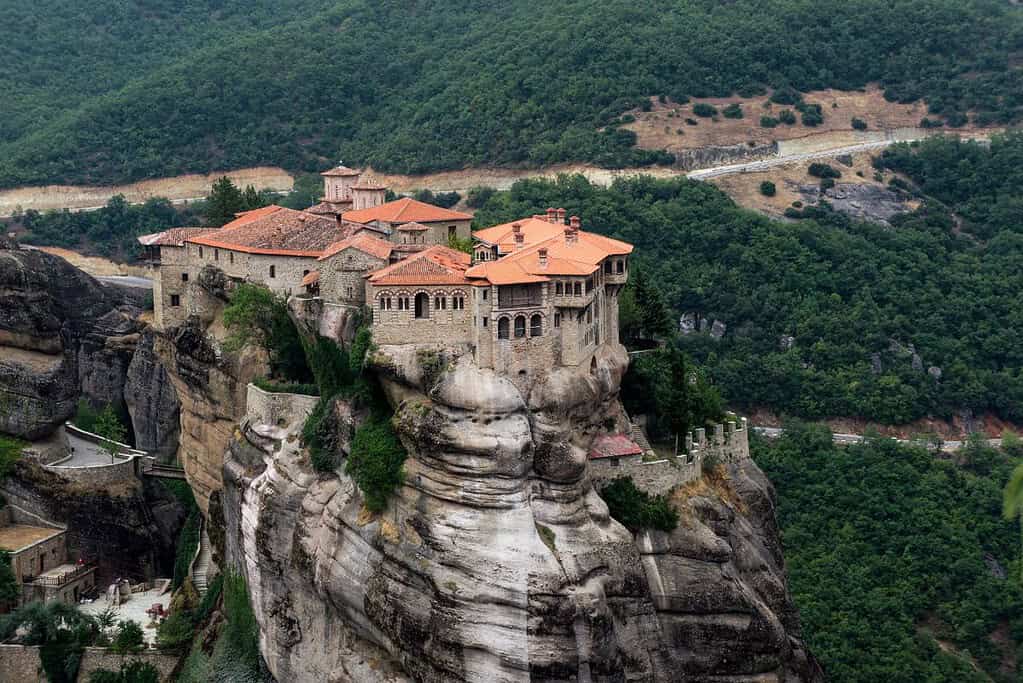
Meteora is a UNESCO World Heritage Site located in central Greece. It is renowned for its unique landscape, featuring towering rock formations home to several historic monasteries. Perched on these towering rocks, the monasteries offer breathtaking views of the surrounding valleys and mountains. Dating back to the 14th century, the monasteries were originally built by monks seeking solitude and spiritual enlightenment. Today, Meteora is a site of great religious significance and a popular tourist destination, attracting visitors from around the world who come to admire its natural beauty and explore its rich cultural heritage.
Mount Athos
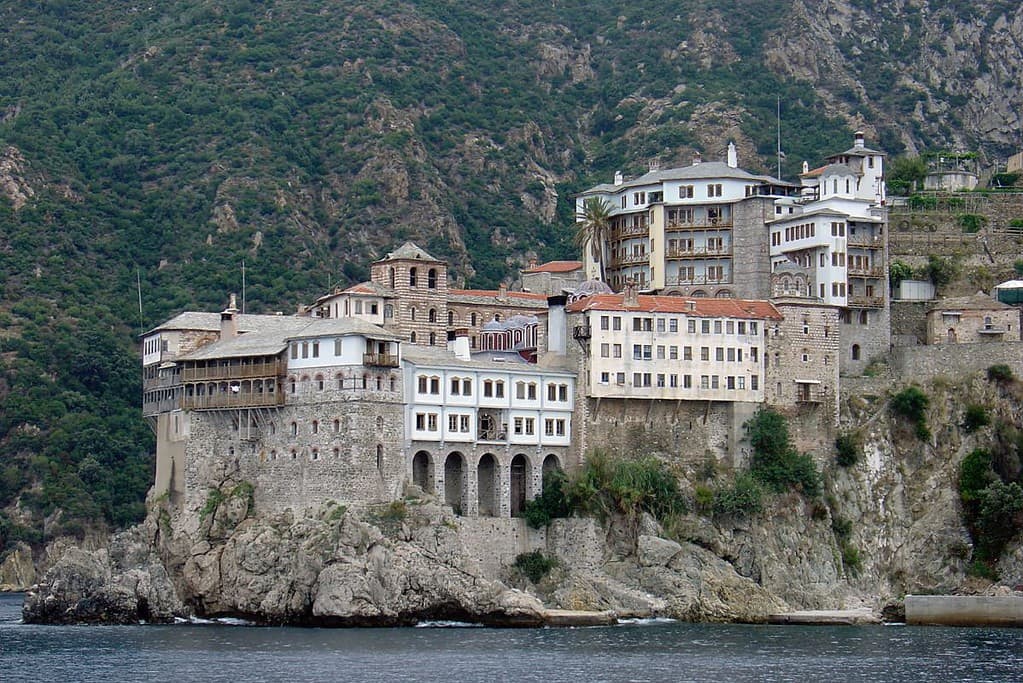
Mount Athos, located in Greece, is a UNESCO World Heritage Site renowned for its spiritual and cultural significance. This unique peninsula is home to a self-governing community of Orthodox monks, making it a symbol of Eastern Orthodox Christianity. The mountainous landscape is dotted with awe-inspiring monasteries, some dating back over a thousand years. These monastic complexes are architectural marvels and repositories of religious art, manuscripts, and ancient artifacts. Mount Athos is a place of pilgrimage and tranquility, offering visitors a glimpse into a timeless spiritual tradition that has endured for centuries.
Greece UNESCO tentative list
- Late Medieval Bastioned Fortifications in Greece
- National Park of Dadia – Lefkimi – Souflion
- Ancient Lavrion
- Petrified Forest of Lesvos
- Archaeological site of Ancient Messene
- Minoan Palatial Centres (Knossos, Phaistos, Malia, Zakros, Kydonia)
- Archaeological site of Nikopolis
- The broader region of Mount Olympus
- The Area of the Prespes Lakes: Megali and Mikri Prespa which includes Byzantine and post-Byzantine monuments
- Gorge of Samaria National Park
- Fortress of Spinalonga
- Ancient Towers of the Aegean Sea
- Zagorochoria – North Pindos National Park
- Ancient Greek Theatres
Tours in Greece
Our choices of tours in Greece are divided into thematic features such as Athens, Santorini, and Delphi Experience.
